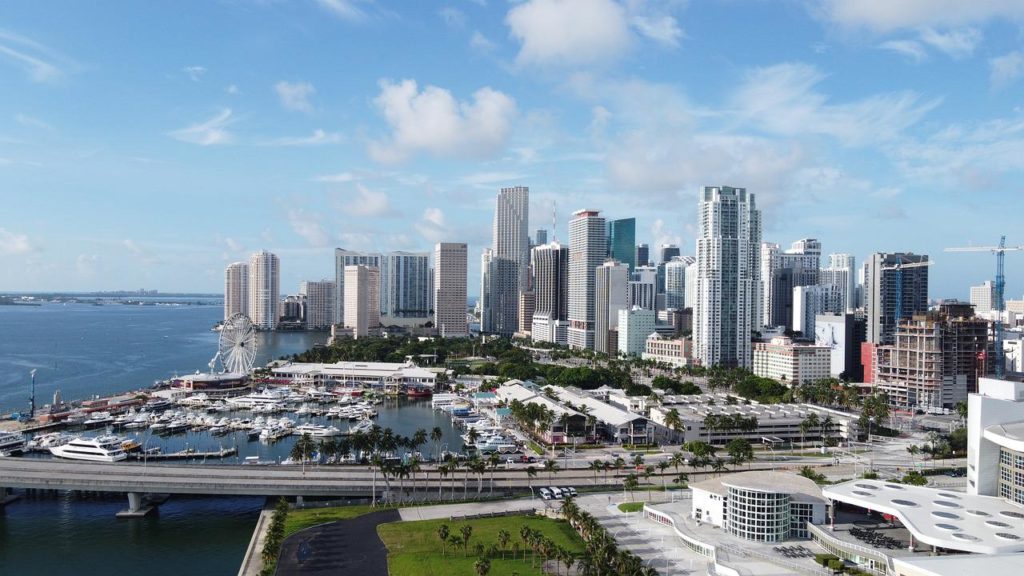
Article Summary: National Parks Near Miami
National Parks near Miami. There’s so much more to this waterfront paradise than the feel of the sand and the sounds of the water. In this article, More Than Just Parks takes you to five incredible national park sites that are within a day’s drive of Miami.
I’ve been to so many of these amazing places since retiring from teaching in 2018. Did I mention that I taught history? I spent a lifetime teaching about the history behind these momentous sites. Then I got to see them firsthand. And now I’m sharing the stories of these incredible places with you. It doesn’t get any better than that!
What Is Miami Known For? Miami is known for its strong Cuban Influence, warm weather, pristine beaches, and great diving sites.
The city is also home to some famous teams and landmarks such as the Miami Heat, the iconic Miami tower, and the beautiful Everglades National Park.
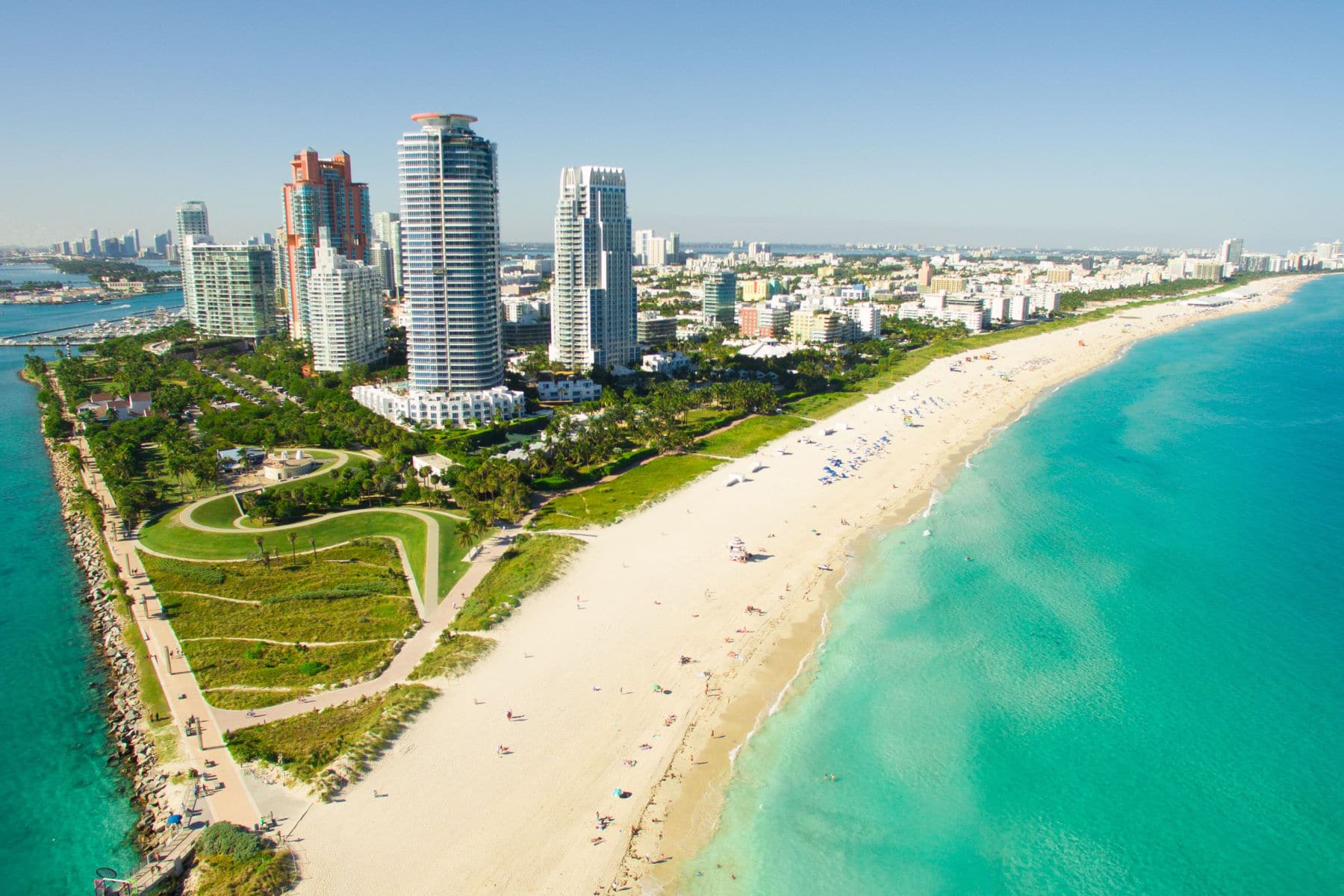
So, What Is A National Park?
We get asked that question a lot because there’s a difference between a “national park” and a “national park site.” To help you understand that difference you might want to check out our article titled: What Is A National Park Really?
If you’re planning a trip to Miami then one book that I highly recommend is: Fodor’s South Florida: with Miami, Fort Lauderdale & the Keys.
Now let’s go ahead with 5 reasons why you’ll want to hop in your car and make a day’s drive from Miami to one of these truly amazing places.

Table Of Contents: National Parks Near Miama
Best National Parks Near Miami
1. Everglades National Park
Distance From Miami: One hour & 10 minutes via FL-836 W & US-41 W.
Everglades National Park is one of the largest subtropical wildernesses in the country. The history of the park can be traced back to the late 1800s, when the federal government first considered setting aside land in the Everglades as a protected area.
However, it wasn’t until 1947 that the park was officially established, making it the third national park in Florida and the only one dedicated to protecting a subtropical ecosystem.
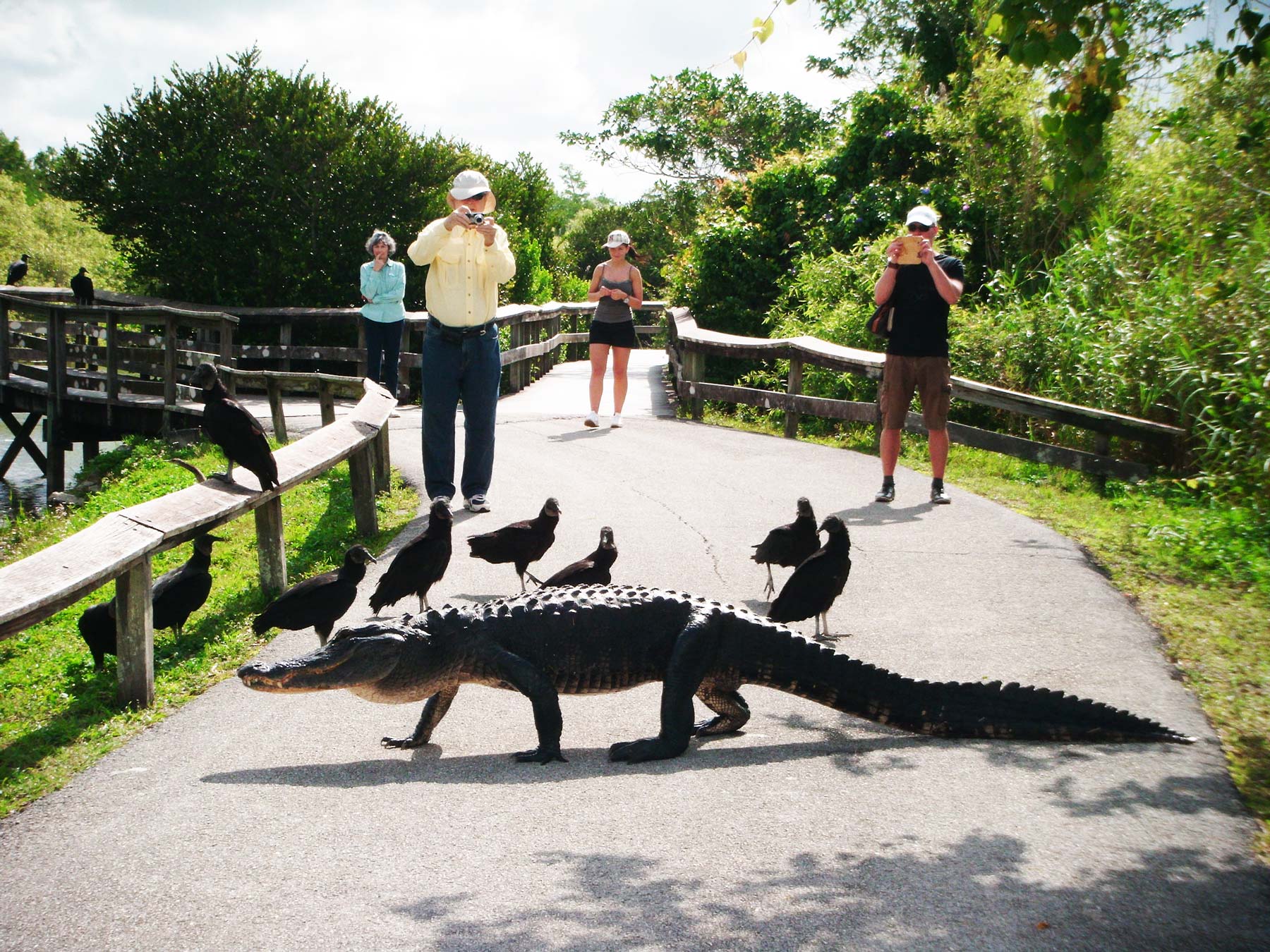
It’s Home To Many Indigenous Tribes
The Everglades has long been home to many indigenous tribes, including the Calusa, Seminole, and Miccosukee tribes. The area was also used for hunting, fishing, and farming by early settlers.
In the late 1800s, efforts began to drain the Everglades for agricultural and development purposes. This led to a rapid loss of wetlands and a decline in the area’s plant and animal populations.
In the 1920s, conservationist and author Marjory Stoneman Douglas began to raise awareness about the importance of the Everglades and the need to protect it.
She wrote a book called “The River of Grass,” which described the unique and delicate ecosystem of the Everglades and the threat posed by development and drainage. Her work helped to galvanize public support for preserving the area as a protected national park.

Despite the establishment of Everglades National Park, the wetlands continued to be drained and the park faced a number of environmental challenges, including water pollution, introduced species, and habitat loss.
In the 1960s, Congress passed the Wilderness Act, which designated much of the park as wilderness and protected it from development.
In 2000, the Comprehensive Everglades Restoration Plan was launched, which aimed to restore the natural water flow and ecosystem of the Everglades.
Today, the park is home to a rich diversity of plant and animal species, including alligators, manatees, panthers, and hundreds of species of birds.

Things to Do at Everglades National Park
There are many ways to enjoy and experience Everglades National Park. Here are some popular activities:
- Wildlife viewing: The park is home to a wide variety of wildlife, including alligators, manatees, panthers, and hundreds of species of birds. You can spot these animals on a boat tour, hike, or drive through the park.
- Hiking: The park has several hiking trails, including the Anhinga Trail, which offers a close-up view of alligators and other wildlife, and the Gumbo Limbo Trail, which takes you through a lush tropical forest.
- Boat tours: Boat tours are a great way to explore the park and see its wildlife up close. You can take a guided tour or rent a canoe or kayak and paddle through the mangroves.
- Fishing: Fishing is allowed in designated areas of the park and is a popular activity for visitors. You can catch a variety of fish, including tarpon, snook, and redfish.
- Camping: The park has several campgrounds, including the Long Pine Key Campground and the Flamingo Campground, where you can spend the night and enjoy the beauty of the Everglades.
- Ranger-led programs: The park offers a variety of ranger-led programs, including walks, talks, and boat tours, which provide an opportunity to learn about the history and ecology of the Everglades.
- Visiting the visitor center: The Ernest F. Coe Visitor Center is a great starting point for your visit to the park. Here, you can see exhibits and watch a film that provides an overview of the park’s history and ecosystems.
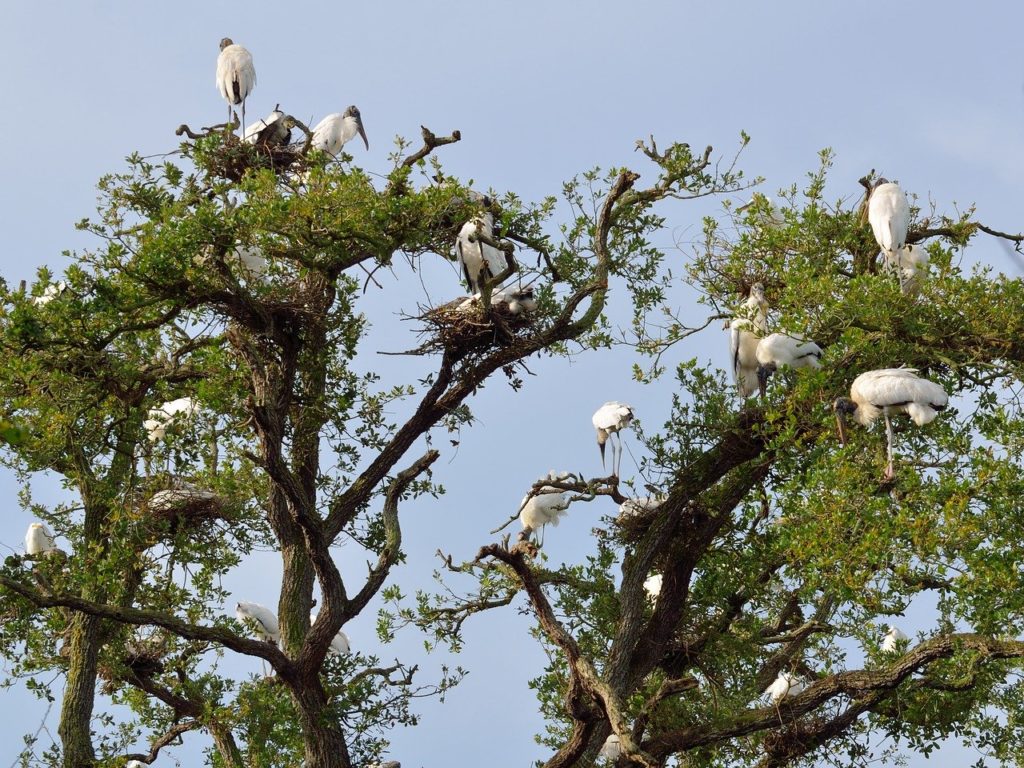
CHECK OUT: 11 SURPRISING Everglades National Park Facts
2. Biscayne National Park
Distance From Miami: 52 minutes via Ronald Reagan Turnpike.
Biscayne National Park covers an area of 172,971 acres and includes Biscayne Bay, the keys, and the adjacent offshore waters. It is one of the largest marine parks in the country and is known for its diverse ecosystems, including mangrove forests, seagrass beds, coral reefs, and shipwrecks.
The park was established in 1980 and is named after Biscayne Bay, which is known for its clear waters and abundant marine life. The bay is home to numerous species of fish, crustaceans, and other marine organisms, and is a popular spot for snorkeling and diving.
In addition to its marine resources, Biscayne National Park also contains several keys and islands, including Elliott Key, which is the largest of the park’s islands and is covered in tropical hardwood hammocks and mangrove forests. The park also has several historic sites, including the Stiltsville settlement, which is a group of stilt houses that were once used for fishing and recreation.
Visitors to Biscayne National Park can enjoy a variety of activities, including snorkeling, diving, fishing, boating, and camping. The park also offers ranger-led programs, including boat tours, nature walks, and talks, which provide an opportunity to learn about the park’s history, ecology, and wildlife.
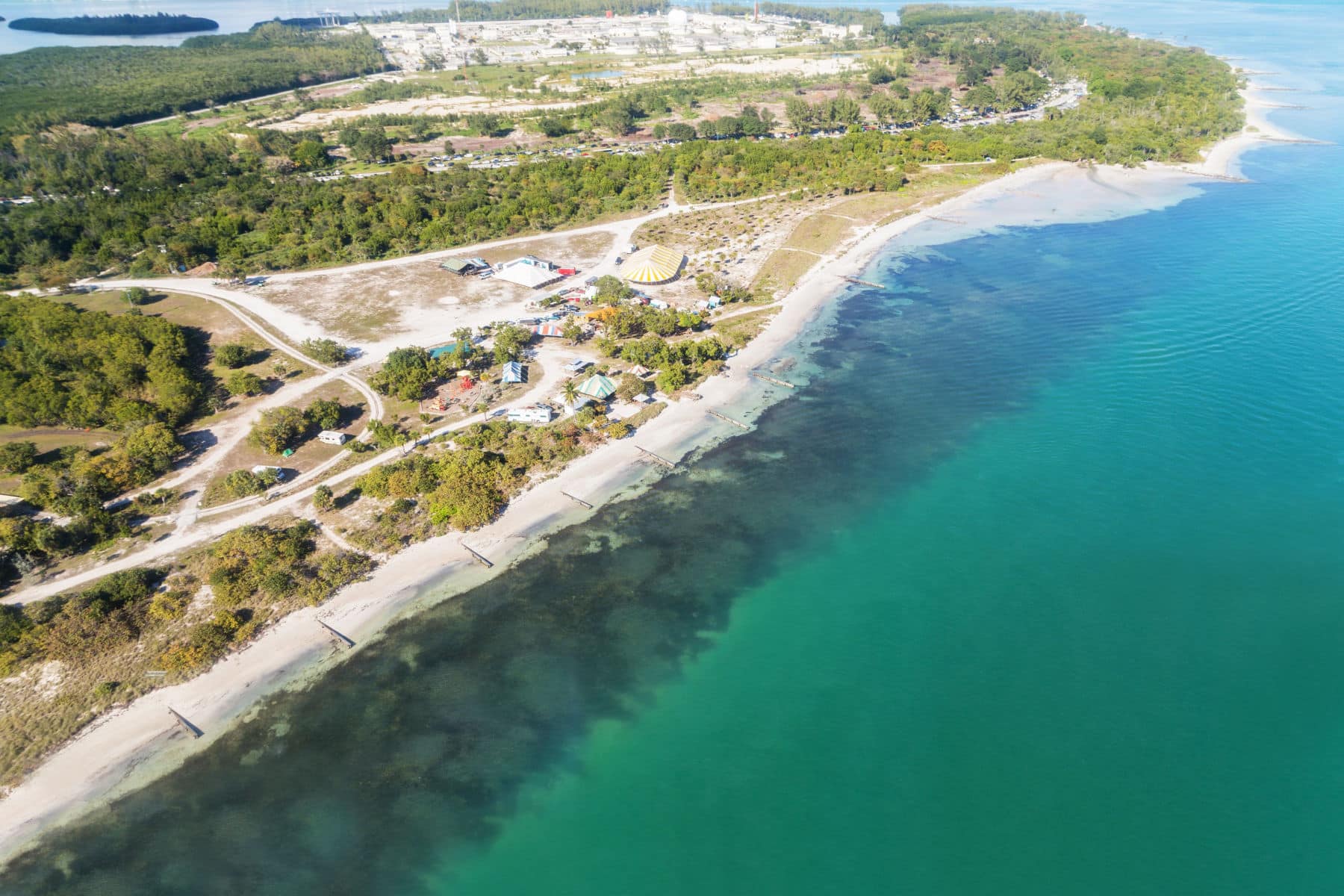
Best Things to Do at Biscayne National Park
Scuba Diving is one of Biscayne National Park’s primary activities as 90% of the park is underwater. The reefs here are no stranger to the adverse effects of climate change as the entire ecosystem is under threat.
Boating is another great way to see and explore the park. Biscayne is full of beautiful mangrove swamps which are best viewed by kayak or canoe.
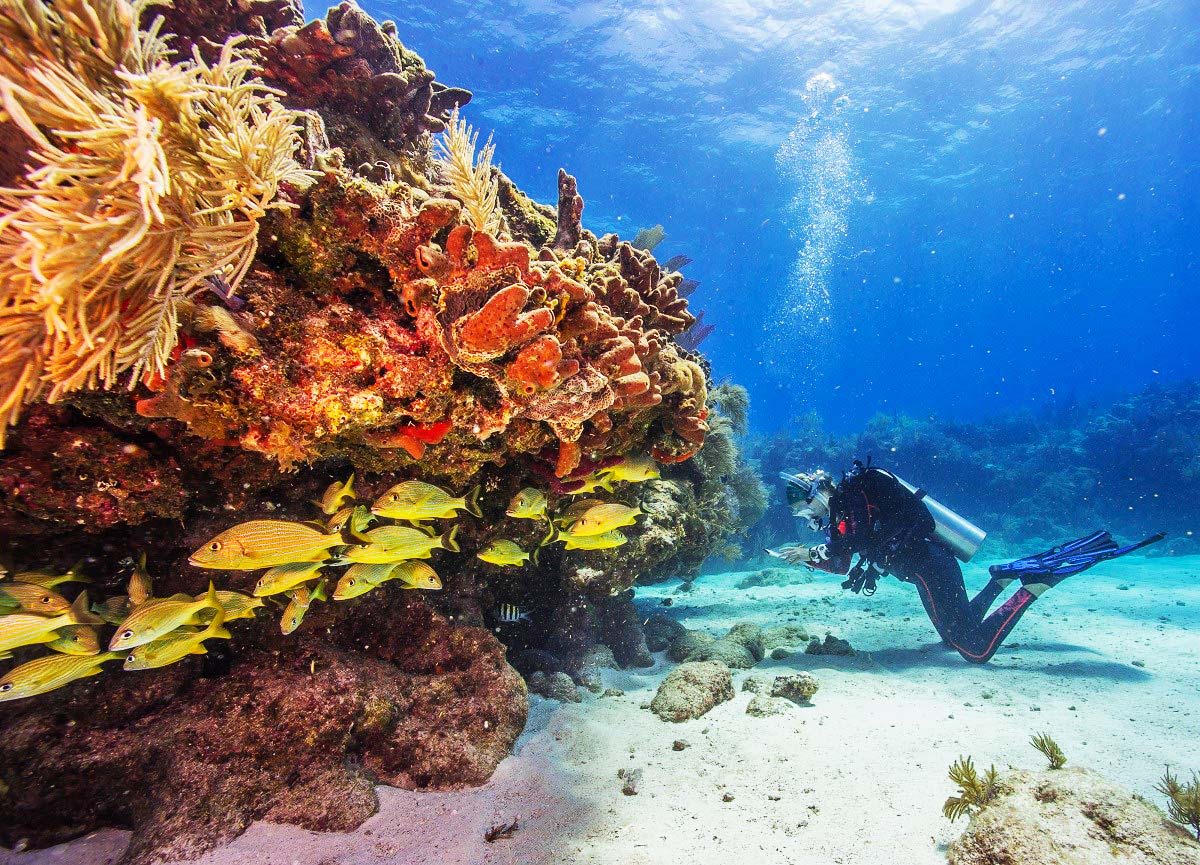
CHECK OUT: 15 AMAZING Facts About Biscayne National Park
3. Big Cypress National Preserve
Distance From Miami: One hour via FL-836 W & US-41 W.
Big Cypress National Preserve covers an area of over 720,000 acres and is part of the greater Everglades ecosystem. The preserve was established in 1974 to protect the unique and diverse ecology of the Big Cypress Swamp, which includes hardwood hammocks, pine rocklands, cypress swamps, and prairies.
The Big Cypress Swamp is known for its rich wildlife, including the Florida panther, alligators, black bears, and hundreds of species of birds. The preserve is also home to a variety of plant species, including the endangered ghost orchid and royal palm, as well as a number of rare and endemic species found nowhere else in the world.
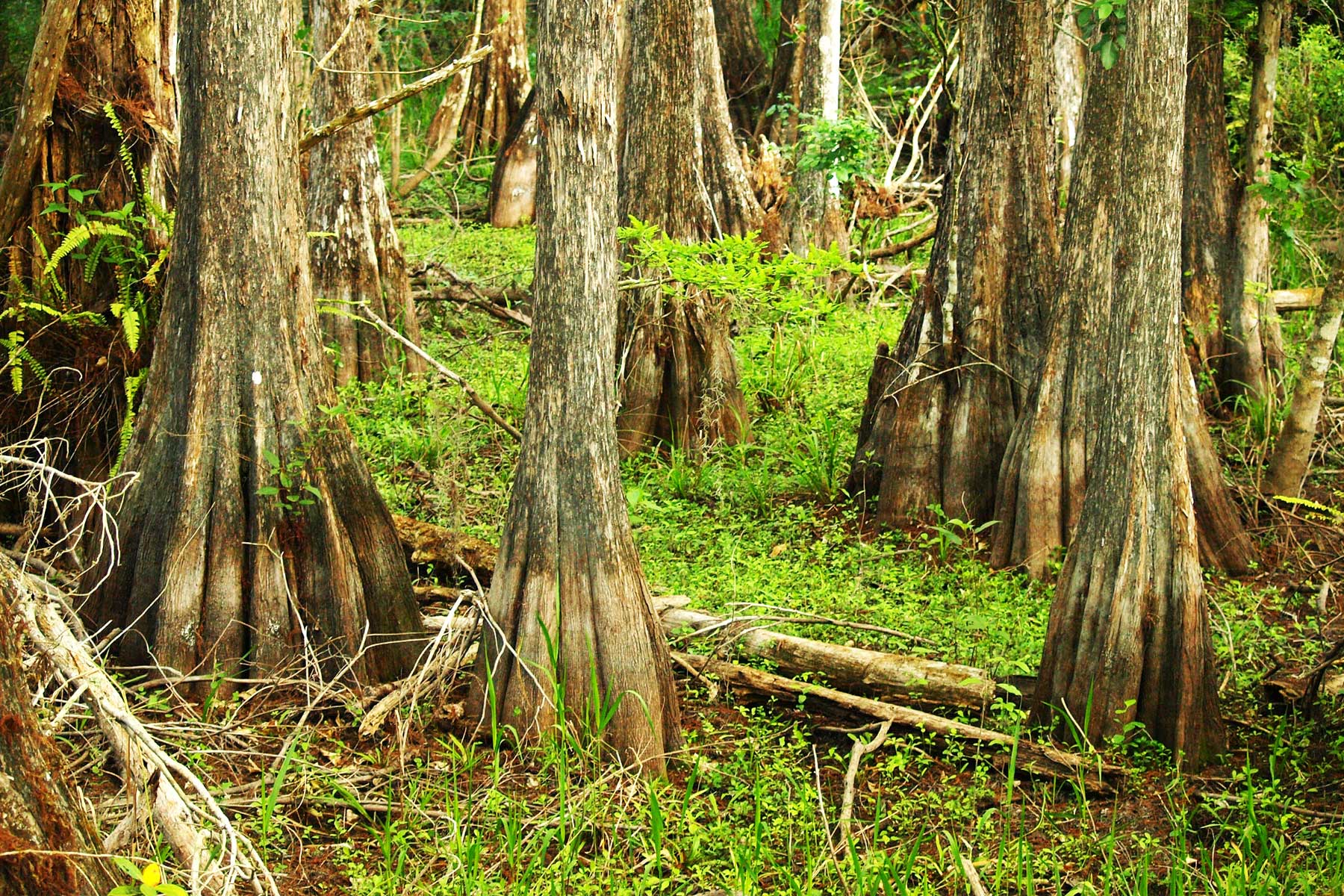
Visitors to Big Cypress National Preserve can enjoy a variety of activities, including hiking, camping, canoeing, fishing, and wildlife viewing. The preserve has several hiking trails, including the boardwalk-style Gator Hole Trail and the Swamp Walks, which take visitors into the heart of the swamp.
There are also several campgrounds and picnic areas, as well as opportunities for off-road vehicle use on designated trails.
In addition to recreational activities, Big Cypress National Preserve also provides opportunities for research and education. Scientists and researchers study the park’s unique ecosystems and wildlife, while ranger-led programs and interpretive displays provide visitors with an understanding of the park’s history, ecology, and wildlife.
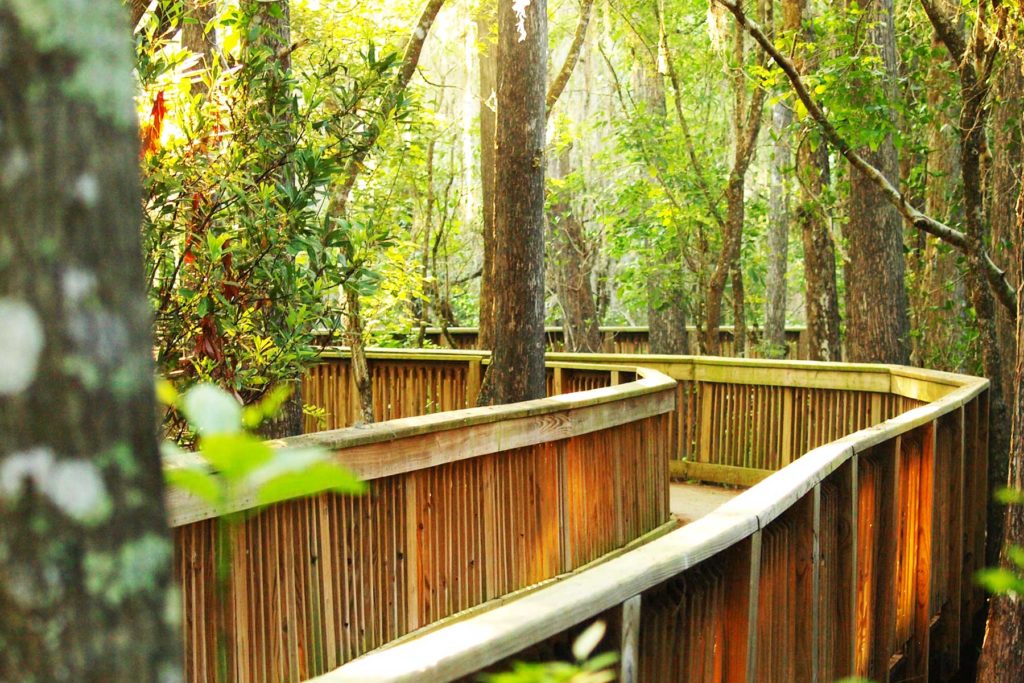
Things To Do At The Park
Here are some popular activities:
- Hiking: There are several trails within the preserve, ranging from easy boardwalks to challenging backcountry trails. Popular trails include the Gator Hole Trail and the Swamp Walks, which provide visitors with the opportunity to see wildlife and learn about the ecology of the swamp.
- Camping: The preserve has several campgrounds, including the Midway and Monument campgrounds, where visitors can spend the night under the stars and immerse themselves in the wilderness.
- Canoeing and kayaking: The preserve is home to several slow-moving rivers and canals that are perfect for canoeing and kayaking. Rentals are available at the park, and guided tours are also available.
- Wildlife viewing: Big Cypress is home to a wide variety of wildlife, including alligators, panthers, black bears, and hundreds of species of birds. Visitors can spot wildlife on a hike, boat tour, or drive through the preserve.
- Fishing: Fishing is allowed in designated areas of the preserve and is a popular activity for visitors. You can catch a variety of fish, including bass, catfish, and panfish.
- Off-road vehicle use: The preserve has several trails that are open to off-road vehicle use, including the Bear Island Unit, which is open to ATVs, UTVs, and other off-road vehicles.
- Ranger-led programs: The preserve offers a variety of ranger-led programs, including walks, talks, and canoe trips, which provide an opportunity to learn about the history and ecology of the Big Cypress Swamp.
- Visiting the visitor center: The Big Cypress Swamp Welcome Center is a great starting point for your visit to the preserve. Here, you can see exhibits and watch a film that provides an overview of the park’s history and ecosystems.
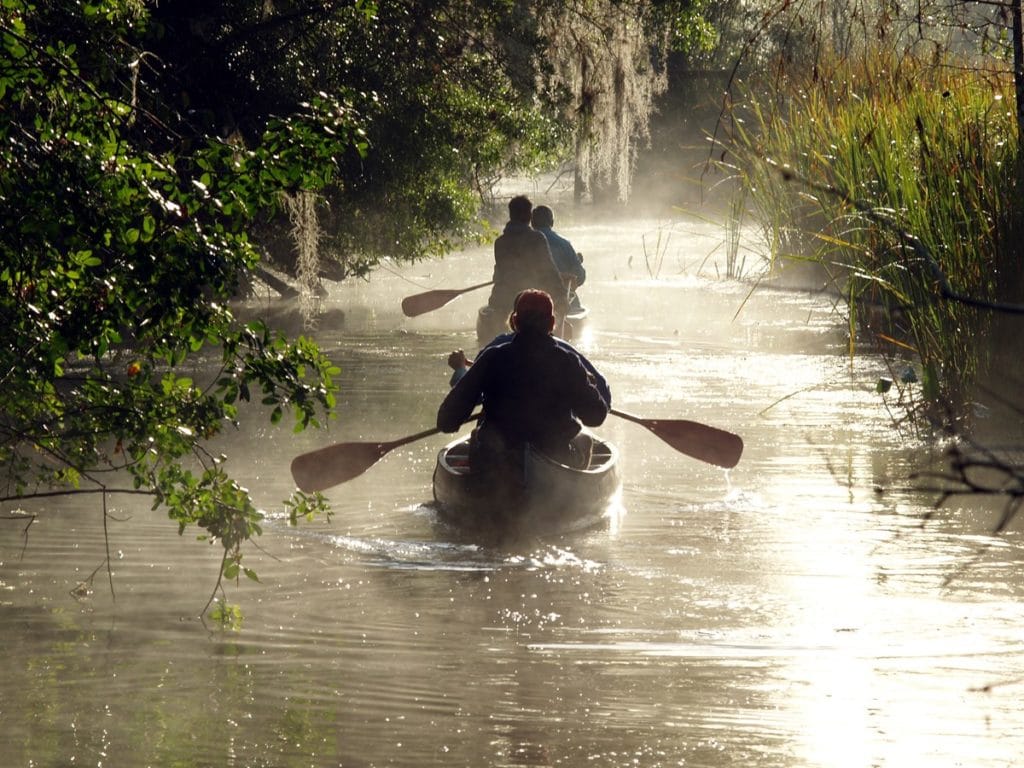
CHECK OUT: 5 EPIC LOUISIANA NATIONAL PARKS
4. Canaveral National Seashore
Distance From Miami: Three hours & 40 minutes via Florida’s Turnpike & I95 N.
Canaveral National Seashore covers an area of over 57,000 acres and encompasses a diverse range of coastal habitats, including beach, dune, salt marsh, and estuary environments.
The history of Canaveral National Seashore dates back to the late 1800s, when the area was used for farming and logging. In the early 1900s, the development of the aviation industry in the area brought with it new challenges, including coastal erosion and the degradation of the natural habitats.
In the 1950s, a group of citizens from the nearby town of New Smyrna Beach began advocating for the creation of a national seashore to protect the area’s natural beauty and resources. After several years of discussion and debate, the seashore was established in 1975 as a unit of the National Park Service.
Today, Canaveral National Seashore is a popular destination for visitors seeking to enjoy the beauty of the coastal environment. The seashore provides opportunities for a wide range of recreational activities, including hiking, fishing, swimming, boating, and wildlife viewing. Visitors can also explore the seashore’s rich cultural history, including the remains of the ancient Timucuan Indian village at Shell Mound and the historic Playalinda Beach.
The seashore is also an important habitat for a variety of wildlife, including sea turtles, manatees, and over 300 species of birds. The seashore’s unique coastal ecosystems provide important nesting, feeding, and resting habitats for these and other species.
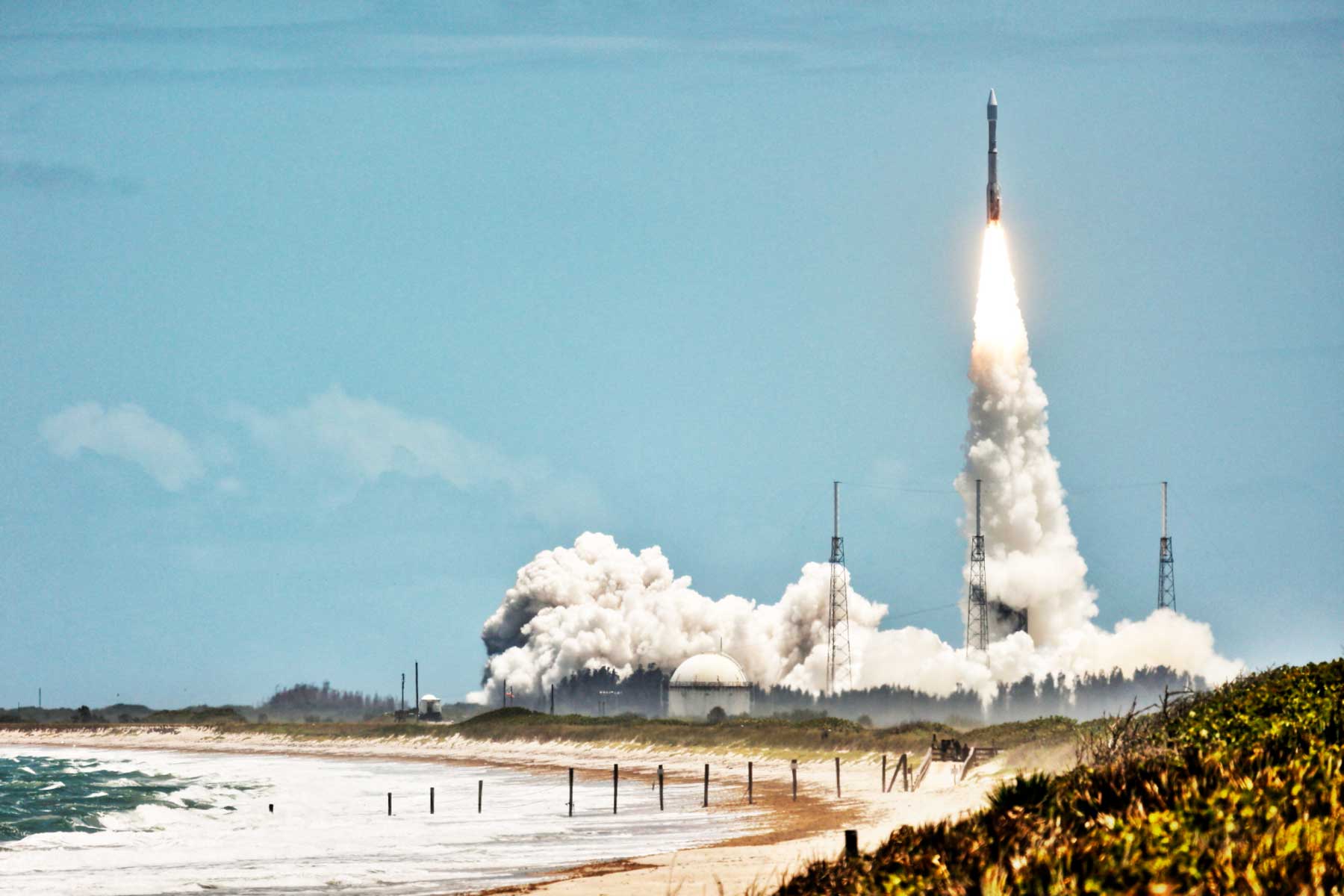
things to do
Rocket Launch Viewing – Cape Canaveral is one of the best places in the world to watch a rocket blast off into space. As such, the national seashore draws millions of folks for this very reason every year.
Windy Castle Trail – The Windy Castle Trail is a great way to experience the flora and fauna of the region. Be sure to pack mosquito repellent as there is a very high chance you will encounter some on the trail.
CHECK OUT: 12 EPIC NORTH CAROLINA NATIONAL PARKS
5. De Soto National Memorial
Distance From Miami: Four hours via I-75 N.
The De Soto National Memorial was established in 1948 to commemorate the landing of Spanish explorer Hernando de Soto and his expedition in 1539. The expedition was the first European exploration of what is now the southeastern United States, and it had a profound impact on the indigenous cultures and natural environments of the region.
De Soto and his men arrived in the area in May of 1539 and spent the next three years exploring the southeastern United States, traveling as far as the Mississippi River. During their travels, they encountered many Native American tribes and made contact with several important cultural and political centers, including the powerful Mississippian chiefdom of Mabila.
The De Soto expedition was significant because it was the first European exploration of the southeastern United States, and it marked the beginning of a new era of contact and conflict between indigenous peoples and European colonists. The expedition also had a profound impact on the natural environment, with the introduction of new species of plants and animals, and the spread of diseases that devastated many Native American communities.
Today, the De Soto National Memorial is a popular destination for visitors interested in learning about the history and culture of the southeastern United States. The park features a museum, interpretive exhibits, and walking trails that provide visitors with an opportunity to explore the history and significance of the De Soto expedition.
The park also provides educational programs and activities for visitors of all ages, including living history demonstrations, ranger-led walks, and special events.
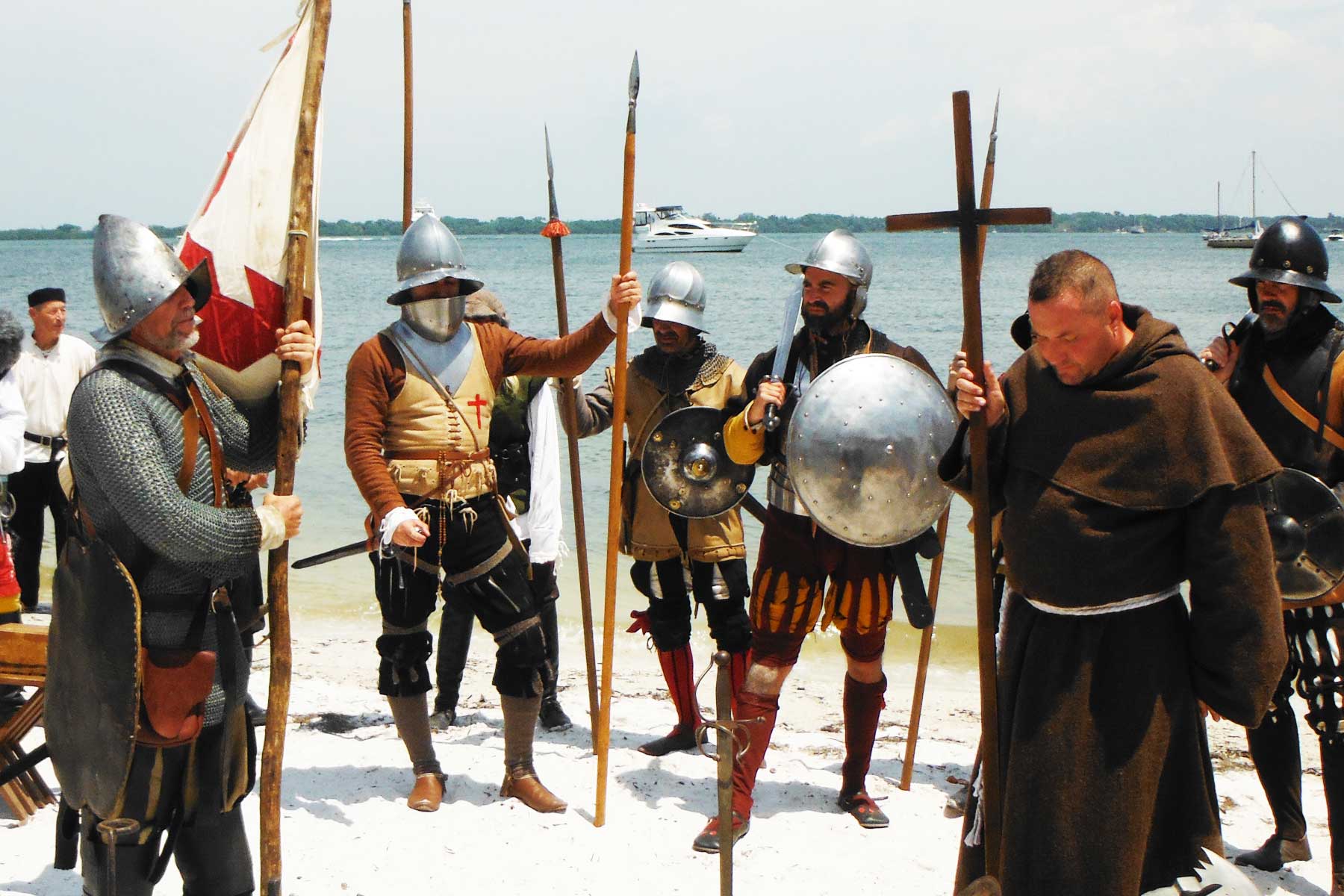
CHECK OUT: 25 BUCKET-LIST FAMOUS LANDMARKS IN AMERICA (MUST-SEE)
National Parks Near Miami FAQ
Biscayne National Park protects Biscayne Bay just south of Miami. You can even see the Miami skyline from certain places in the park. What is this? Of all three national parks in south Florida, this is by far the closest.
There are three major national parks within driving distance of Miami
Miami is known for its strong Cuban Influence, warm weather, pristine beaches, and great diving sites. The city is also home to some famous teams and landmarks such as the Miami Heat, the iconic Miami tower, and the beautiful Everglades National Park.
Why Trust Us About National Parks Near Miami?
We’re Jim Pattiz and Will Pattiz, collectively known as the Pattiz Brothers (and sometimes the Parks Brothers) and we absolutely LOVE the national parks.
You should probably know that we don’t just make this stuff up out of thin air. We’ve spent our entire adult lives exploring and filming America’s national parks and public lands.
We’ve worked with the National Park Service, the Department of Interior, USDA, and the U.S. Forest Service for years creating films on important places and issues. Our work has been featured in leading publications all over the world and even some people outside of our immediate family call us experts on the national parks.
Meet The Parks Brothers
Map Of National Parks Near Miami
List Of National Parks Near Miami
- Everglades National Park
- Biscayne National Park
- Big Cypress National Preserve
- Canaveral National Seashore
- De Soto National Memorial
Helpful Related Articles
Overseas Highway Road Trip: Miami to Key West Drive: Everything You Need to Know
Best East Coast National Parks: Top 10 Best East Coast National Parks Ranked
National Parks Ranked: ALL 63 US NATIONAL PARKS RANKED By Experts
Most Visited National Parks: Top 10 Most Visited US National Parks
National Parks Road Trip: 10 EPIC National Parks Road Trips (Expert Guide)
We Hope You’ll Follow Our Journey

Our goal here at More Than Just Parks is to share the beauty of America’s national parks and public lands through stunning short films in an effort to get Americans and the world to see the true value in land conservation.
We hope you’ll follow our journey through the parks and help us to keep them the incredible places that they are. If you’re interested in joining the adventure then please sign up below!


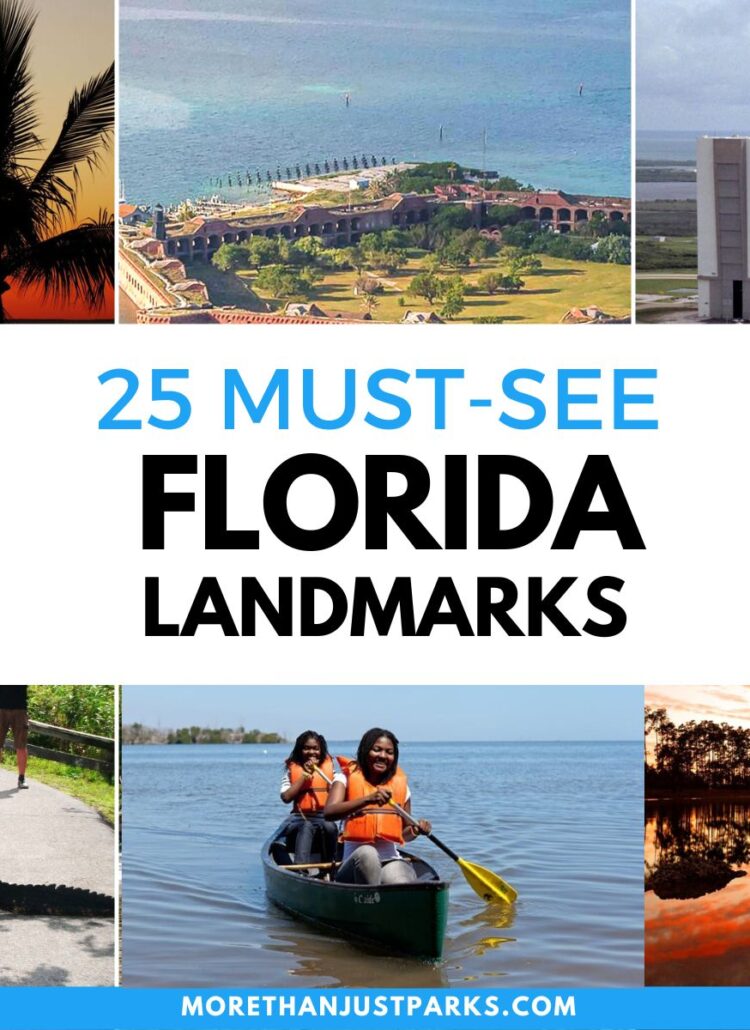
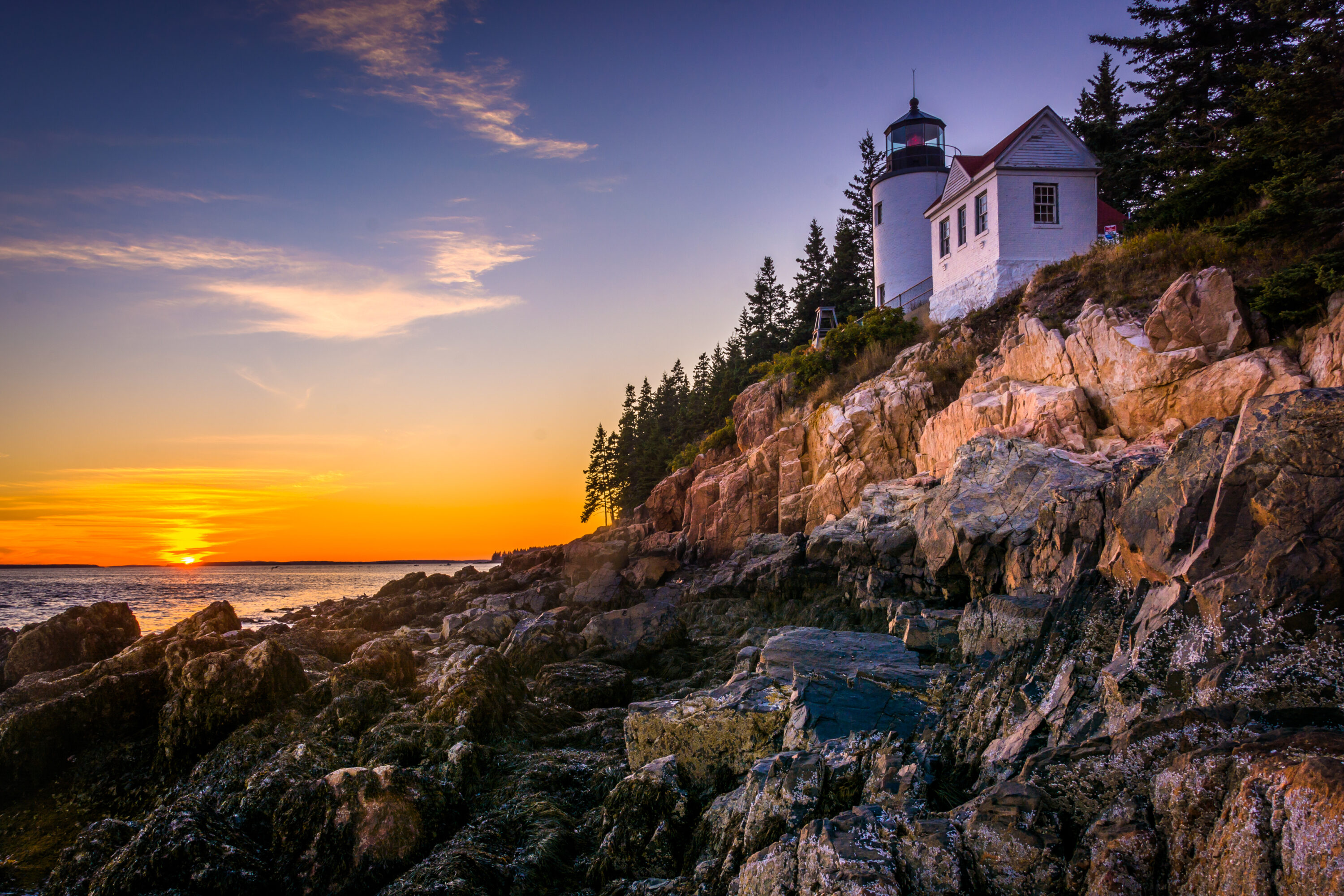

Leave a Reply